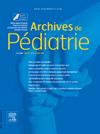Brain death diagnostic process in children after thiopental sedation: a comparative retrospective cohort study
IF 1.3
4区 医学
Q3 PEDIATRICS
引用次数: 0
Abstract
Background
The determination of brain death (BD) is the primary pathway to organ donation in children. Thiopental is a sedative drug prescribed in critical situations potentially leading to BD and has been identified as a confounder during BD diagnosis. The implications of prior thiopental sedation on the diagnostic process of BD are poorly defined.
Objective
To compare the timeline and process involved in BD diagnosis between patients who received thiopental sedation versus those who did not.
Methods and Setting
Retrospective analysis was carried out on the healthcare records of all children who underwent the process of BD evaluation and diagnosis in our institution, between January 2012 and April 2020.
Results
74 patients were included; 29 had been treated with thiopental and 45 had received other sedatives or none. Median [IQR] time from reporting of suspected BD patients to apnea test (19.5 [11.5–30.2] vs 11.5 [5.4–21.1] hours, p = 0.015) and to BD confirmatory test (24.2 [7.2–32.6] vs 13.2 [6.2–23.5] hours, p = 0.019) was significantly longer in the thiopental group. Organ allocation was also delayed in the thiopental group. Thiopental plasma level was measured before BD examination in 24 patients, and the median concentration of the last assay was 4.6 [0.8–8.8] mg.L-1. The BD diagnostic process included persistent signs of cerebral blood flow interruption on transcranial Doppler in 89.7 % of patients in the thiopental group vs 68.9 % in the other group (p = 0.049).
Conclusion
Prior administration of thiopental delays the process involved in the evaluation and diagnosis of BD in children in our intensive care unit. The diagnosis of BD after thiopental sedation requires a multimodal evaluation, which should include the monitoring of thiopental plasma levels and could be guided by transcranial Doppler.
硫喷妥钠镇静后儿童脑死亡诊断过程:一项比较回顾性队列研究。
背景:确定脑死亡(BD)是儿童器官捐献的主要途径。硫喷妥是一种镇静药,在可能导致双相障碍的危急情况下使用,在双相障碍诊断中被认为是一种混杂因素。既往硫喷妥镇静对双相障碍诊断过程的影响尚不明确。目的:比较接受硫喷妥钠镇静和未接受硫喷妥钠镇静的患者在BD诊断中的时间和过程。方法和背景:回顾性分析2012年1月至2020年4月在我院接受双相障碍评估和诊断的所有儿童的医疗记录。结果:纳入74例患者;29例使用硫喷妥钠治疗,45例使用或未使用其他镇静剂。硫喷妥钠组从报告疑似双相障碍患者到呼吸暂停测试(19.5[11.5-30.2]对11.5[5.4-21.1]小时,p = 0.015)和BD确诊测试(24.2[7.2-32.6]对13.2[6.2-23.5]小时,p = 0.019)的中位数[IQR]时间明显更长。硫喷妥钠组器官分配也延迟。24例患者在BD检查前测定硫喷妥钠血浆水平,末次测定中位浓度为4.6 [0.8-8.8]mg.L-1。双相障碍的诊断过程包括经颅多普勒显示持续的脑血流中断迹象,硫喷妥钠组为89.7%,另一组为68.9% (p = 0.049)。结论:事先使用硫喷妥会延迟我们重症监护室儿童双相障碍的评估和诊断。硫喷妥钠镇静后BD的诊断需要多模式评估,包括监测硫喷妥钠血浆水平,并可经颅多普勒指导。
本文章由计算机程序翻译,如有差异,请以英文原文为准。
求助全文
约1分钟内获得全文
求助全文
来源期刊

Archives De Pediatrie
医学-小儿科
CiteScore
2.80
自引率
5.60%
发文量
106
审稿时长
24.1 weeks
期刊介绍:
Archives de Pédiatrie publishes in English original Research papers, Review articles, Short communications, Practice guidelines, Editorials and Letters in all fields relevant to pediatrics.
Eight issues of Archives de Pédiatrie are released annually, as well as supplementary and special editions to complete these regular issues.
All manuscripts submitted to the journal are subjected to peer review by international experts, and must:
Be written in excellent English, clear and easy to understand, precise and concise;
Bring new, interesting, valid information - and improve clinical care or guide future research;
Be solely the work of the author(s) stated;
Not have been previously published elsewhere and not be under consideration by another journal;
Be in accordance with the journal''s Guide for Authors'' instructions: manuscripts that fail to comply with these rules may be returned to the authors without being reviewed.
Under no circumstances does the journal guarantee publication before the editorial board makes its final decision.
Archives de Pédiatrie is the official publication of the French Society of Pediatrics.
 求助内容:
求助内容: 应助结果提醒方式:
应助结果提醒方式:


